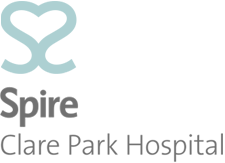Mole Removal & Analysis

Moles, medically known as ‘nevi’, are made up of a particular type of cell, and the name is used to distinguish them from other, similar appearing fleshy growths. Everybody develops moles during their lives, although in varying amounts — most people have at least 10, and some people have 40 or more. There are three kinds of mole:
Acquired moles
Most moles that are acquired during life are usually less than 1/4 inch in size. Many of those that form in childhood and early adult life are now thought to be due to sun damage. Most people think of a mole as being a dark brown spot, but moles have a wide range of appearances. They can be raised from the skin and very noticeable, or they may contain dark hairs. Having hairs in a mole doesn't make it more dangerous. Moles can appear anywhere on the skin, alone or grouped. They usually are brown in color due to melanin (a natural pigment) and can be various sizes and shapes.
Facial moles are probably determined before a person is born. Some may not appear until later in life, but moles that appear after age 50 should be regarded with suspicion. Moles may darken, which can happen after exposure to the sun, pregnancy and sometimes during therapy with certain steroid drugs. There is only a small risk of melanoma cancer developing in these moles.
Atypical moles (dysplastic nevi or Clarks nevi)
An estimated one out of every 10 Americans has at least one atypical mole. These moles are larger than common moles, with borders that are irregular and poorly defined. Atypical moles also vary in color, ranging from tan to dark brown shades on a pink background. They have irregular borders that may include notches. They may fade into surrounding skin and include a flat portion level with the skin. These are some of the features that one sees when looking at a melanoma. When a pathologist looks at an atypical mole under the microscope, it has features that are in-between a normal mole and a melanoma.
While atypical moles are considered to be pre-cancerous (more likely to turn into melanoma than regular moles), not everyone who has atypical moles gets melanoma. In fact, most moles -- both ordinary and atypical ones -- never become cancerous. Thus the removal of all atypical nevi is unnecessary. In fact, half of the melanomas found on people with atypical moles arise from normal skin and not an atypical mole.
Congenital moles
Only a few babies, about 1 in 100, are born with a mole, or congenital nevus. These can vary in size from being less than 1/4 inch to covering almost the entire body. Large moles can vary greatly in size, shape, color, surface texture, and hairiness.
Moles measuring 10 cm or more at birth occur in about one in every 20,000 children. Giant congenital moles involving much of the body surface are less common, possibly around one in every 200,000 to 500,000 births. Many people with a giant moles will have anywhere from several to hundreds of smaller "satellite" moles. In a very few persons with giant moles, nevus cells can also be found in the spinal cord and near the brain, a condition called neurocutaneous melanosis.
The exact risk of melanoma developing in a giant congenital nevus is not known but is thought to be at least 6%.
Small and medium sized congenital moles have a much lower risk, perhaps one tenth of a percent. Small congenital moles rarely turn malignant before puberty. Congenital moles will grow in proportion to body growth. Their color may stay the same, or it may vary. Changes in growth, in color, in surface texture or any pain, bleeding, or itching are all of concern. Any such changes should be evaluated medically if they last longer than a few weeks.
Mole Mapping & Analysis
Since everybody has moles, usually quite a few, it can very difficult to track the development of new moles — especially in places we rarely look at, such the back.
Mole mapping is a digital surveillance technique designed to track and record all moles on your body. This means in the future, these records can be used to discover any new moles, or changes in the appearance of existing moles.
This technique is recommended especially for those at an elevated risk of malignant melanoma, for example due to family history, a suppressed immune system, episodes of serious sun burn, spending a significant amount of time in the sun, having atypical or an excessive number of moles.
During the mapping process, atypical or suspicious moles can be investigated in detail by a dermatologist in a process known as photo-dermoscopy to assess whether they have any cancerous symptoms.
Mole treatment
Surgical excision should be done where cancer is a reasonable concern. Improving cosmetic appearance is also a common reason for excision, but all surgery leaves some scarring. Smaller moles can be "shaved off". Larger ones can be cut out directly and the wound edges sewn together. Much larger moles may be excised in stages by taking a little more out each time until the entire mole is removed. This is called "serial excision."
Cutting out very large moles will leave behind a raw area that is too big to be sewn together and must be covered with a skin-graft. The skin-grafted area will have varying degrees of scarring and will usually be thinner and more fragile than normal skin.
Depending on the technique, the surgery may require local anaesthetic. Other than surgical excision, some moles can be frozen off using liquid nitrogen, or shaved off using a precision laser.



